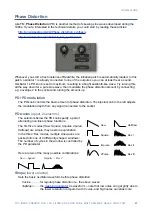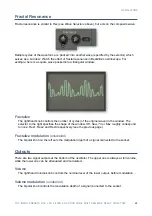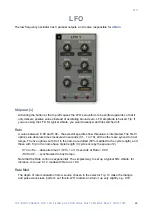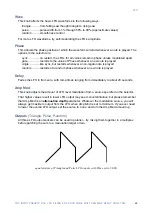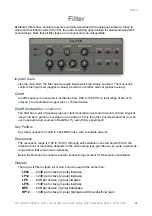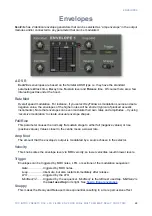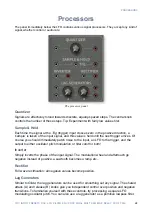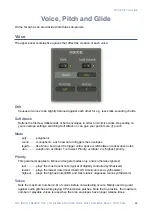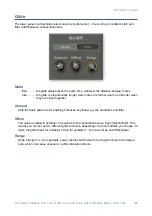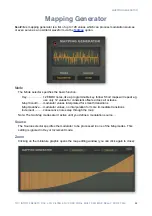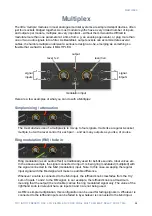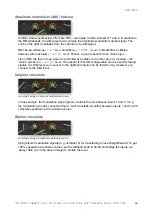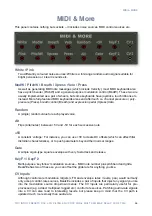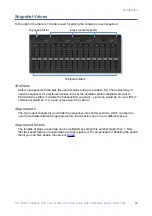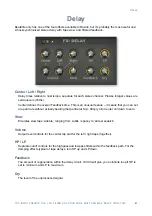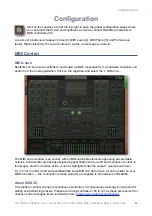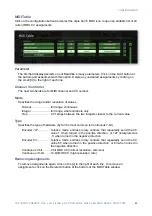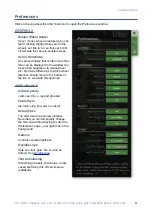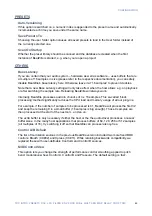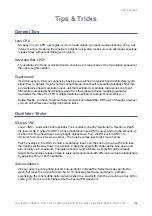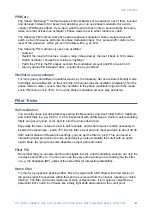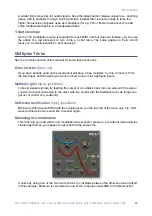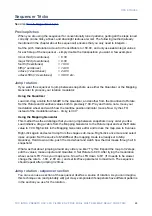
MULTIPLEX
Amplitude modulation (AM) / fade out
Another classic synthesizer effect like RM – use inputs 3 and 4 instead of 1 and 2. In addition to
the RM sidebands, the AM output also contains the amplitude-modulated original signal. The
knob on the right crossfades from the original to the AM signal.
RM can be written as
y = a * mod
, and AM as
y = a * (1 + mod)
. In BeatZille’s multiplex,
however, AM is actually
y = a * (1 - mod)
. There's a good reason for that ‘minus’ sign...
Like in RM, the level of one signal is controlled by another, but in this case it is inverted – the
‘minus’ symbol in
y = a * (1 - mod)
. The upshot is that this configuration can be used for fading
signals out. Whatever you connect to the righthand inputs can be faded out by whatever you
connect to the
Mod
input.
Unipolar crossfade
crossfade using a unipolar modulation source
In this example, the modulation signal (green) controls the mix between inputs 1 and 3. If e.g.
the modulation wheel is connected there, it will crossfade smoothly between inputs 1 and 3, with
complete separation at the extreme values.
Bipolar crossfade
crossfade using a bipolar modulation source
Using bipolar modulation signals (e.g. oscillator 2) for crossfading is less straightforward. To get
100% separation at extreme values, set the lefthand knob to 50.00 and bridge the inputs via
‘daisy-chain’ (as in the above image) to double the level.
35

